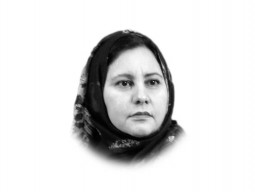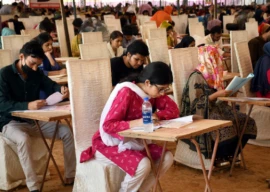
Since Pakistan has been firmly placed in the Chinese orbit, Islamabad’s policymakers would do well to study where China is today and where it is likely to go not only in the near future but also in a few decades ahead. To follow China, Islamabad should read Rush Doshi’s well-received book titled The Long Game: China’s Grand Strategy to Displace American Order. In the author’s view, President Xi Jinping is clearly standing up to the United States by pursuing policies in places such as Hong Kong, Taiwan and the South China Sea that are in its interest although they don’t suit what America is attempting to achieve. The United States has in place the Monroe Doctrine which is meant to keep foreign influences out of the areas that Washington considers to be its backyard. Beijing could follow that precedence, but it has not.
Doshi’s book follows that by the 2015 best seller by Michael Pillsbury’s The Hundred Year Marathon: China’s Secret Strategy to Replace America as the Global Superpower. Pillsbury book was popular with the far right in the United States political system and fed into the anti-China stance taken by President Donald Trump during his four-year presidency. Doshi’s book is based on much more solid research and since he sits in the White House as director China at the National Security Council, he is in a position to influence President Biden’s China policy. His book identifies three turning points in China’s recent history that has resulted in a confrontational relationship with Washington.
The first shift was the consequence of what Doshi calls the “traumatic trifecta” that occurred between 1989 and 1991 that saw several anti-government demonstrations in East European countries that were once part of the Soviet Union. The United States showed its ability to act fast to enforce the agreed United Nations principle that force would not be used to change established boundaries. Saddam Hussein invaded Iraq and the United States reacted by sending its military to push Iraq back to its own territory. The 1991 collapse of the Soviet Union and the emergence of a number of countries as independents on the periphery of Russia changed the international situation.
The second turning point was the financial crisis of 2008 that showed Beijing that the western model of capitalism had some profound weaknesses to which the state control of the economy was not subject. Hu Jintao, the Chinese president at that time, in his address to the 11th Ambassadorial Conference in 2009, modified China’s approach to the world of “hide and bide” with the strategy of actively accomplishing something. “This seemingly mundane semantic shift meant a lot,” argues Doshi. Hu in his address to the conference called for “more offensive moves” around the world.
The third turning point occurred in 2016 following the election of Donald Trump to the America presidency. In a speech to the 19th Congress of the Central Committee of the Chinese Communist Party, President Xi announced a “new era”. He vowed that China would lead the world in innovation, governance and military development. Xi no longer felt the need to modify the “hide and abide” policy of the past, he dispensed with it completely. With his ascension to power, Doshi writes, “the struggle for mastery once confined to Asia is now over the global order and its future.” While a decade earlier, China’s leaders preached accommodation with the American superpower, Xi declared that “it is for the people of Asia to run the affairs of Asia.” These strong words were matched by developments on the ground.
As Beijing expected, China’s hosting of the Winter 2022 Olympics drew a great deal of world attention to the progress the country has made since 2008 when the capital city was also the site of the Olympics. The 2008 event was held at the “Bird’s Nest”, a futuristic looking building. For the 2022, the Chinese constructed an in-door skiing facility which it called the Water Cube. To impress the visitors, it constructed a massive new airport terminal that it claims is the world’s largest human made structure by area covered. It has also finished a high-speed 73-mile rail line that connects Beijing to the nearby seaport, Tianjin.
The build-out hasn’t just been domestic, Eva Dou reminded the readers of her newspaper, The Washington Post. “In 2013 Xi launched the Belt and Road Initiative, BRI, a trillion-dollar infrastructure-building program that encompasses hydropower dams in Cambodia and Pakistan, railways in Uzbekistan and Nigeria, ports in Sri Lanka and Djibouti and much more. The sprawling project is a centerpiece of Xi’s foreign policy and has prompted much international discussion of how Beijing may use it to enhance its global sway.” Dou could have added to her list more Chinese-financed projects in Pakistan such as the port of Gwadar on the Balochistan coast, three motorways that would connect Pakistan’s east coast with Xinjiang in China, and a high-speed rail line that would connect the port city of Karachi with Peshawar in the country’s northeast 1,000 miles away. With America having pulled out of Afghanistan, the Chinese are likely to move in and extend the BRI to Central Asia via Afghanistan.
As China hosted the 2022 winter Olympics comparison were made with the state of the economy 14 years earlier when it hosted the Summer Olympics. Since then, the Chinese GDP has grown almost four-fold, increasing from $4.6 trillion in 2008 to $18 trillion in 2021. The percentage of the middle class has increased in the same period from 3 per cent to 50 per cent. In February 2021, President Xi announced that China had officially eradicated poverty as defined by the World Bank. Miles of high-speed rail lines had gone up from 73 to 24,900 while the number of buildings that classify as skyscrapers — more than 492 feet high — has increased from 848 to 2,708. Internet penetration has gone up from 22.6 per cent to 70.4 per cent of the total population.
China has used its increased economic strength to build up its military prowess. Military spending has increased from $58 billion in 2008 to $209 billion in 2021. It is also investing in developing new weapons; in 2021, Beijing tested a hypersonic missile that can carry nuclear weapons. China’s construction of artificial islands in the disputed waters in the South China Sea has created 3,200 acres of new land in the waters to its south. In 2012, Beijing launched its first aircraft carrier, the Liaoning — a recommissioned Soviet-era vessel from the 1980s — and has gone on to build one of its own. The country has been active in space as well. In 2013, it landed its first lunar rover following six years later by becoming the first country to land a rover on the far side of the Moon. In 2021, it sent a rover on Mars, a planet to which it expects to send its astronauts in 2033.
It is obvious that Pakistan’s close relations with China that have lasted more than half a century will be impacted by these developments. That said, Pakistan needs to be mindful of how China’s relations are evolving with the United States. That is the subject to which I will turn next week.
Published in The Express Tribune, February 21st, 2022.
Like Opinion & Editorial on Facebook, follow @ETOpEd on Twitter to receive all updates on all our daily pieces.




















COMMENTS (5)
Comments are moderated and generally will be posted if they are on-topic and not abusive.
For more information, please see our Comments FAQ